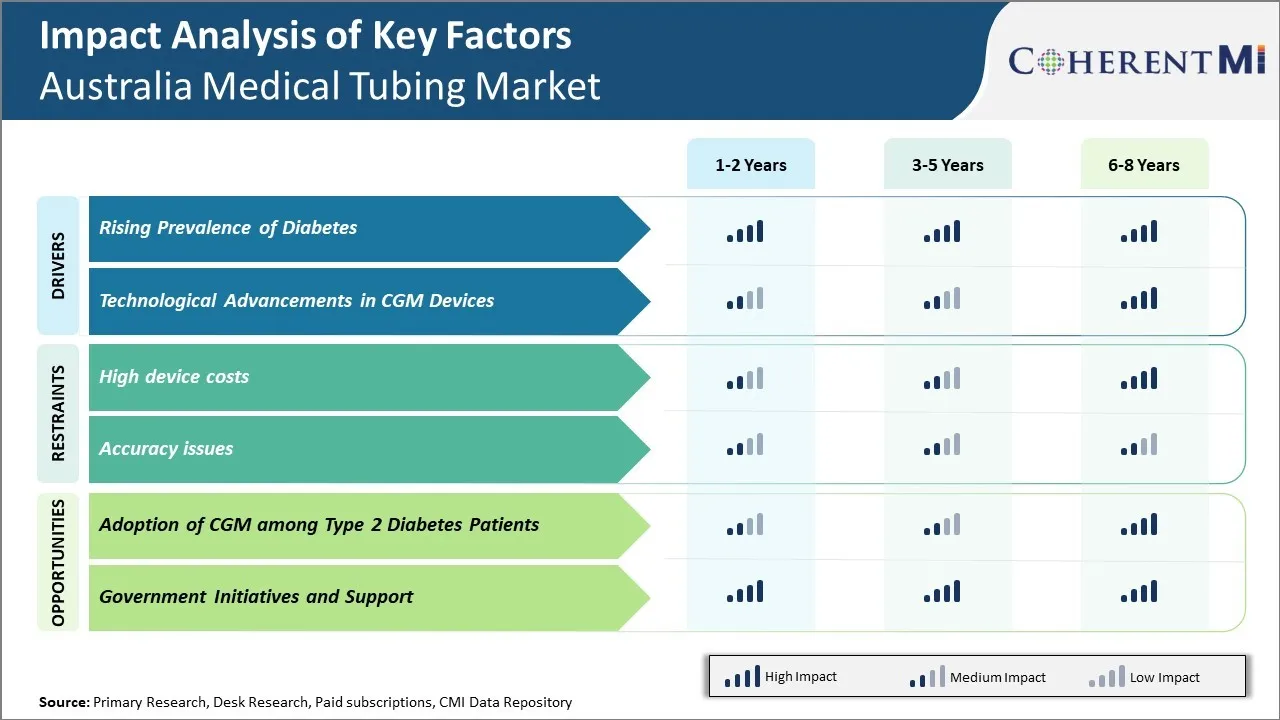Australia Medical Tubing Market Trends
Market Driver – Rising Prevalence of Diabetes
The rising prevalence of diabetes is a major driver for the growth of the medical tubing market in Australia. According to the Australian Bureau of Statistics, nationally around 1.2 million Australians are living with diabetes, which is a substantial increase over the last few years. The incidence of type 1 and type 2 diabetes is also steadily rising across all age groups.
Diabetes requires lifelong medical management through regular monitoring of glucose levels and insulin administration. This is driving significant demand for medical devices and components like tubing used in insulin pumps, catheters, and other medical applications. As per the data released by Australian Institute of Health and Welfare in 2020, the number of Australians using insulin pumps has doubled in the last 5 years with over 70,000 pumps now in use. Insulin pumps use catheters and a complex network of narrow diameter tubings to continuously deliver insulin under the skin. Similarly, the growing prevalence of chronic kidney diseases that often require dialysis is leading to increased use of catheters, dialysis machines and tubings for fluid exchange and purification of blood.
Market Driver – Technological Advancements in CGM Devices
Technological advancements in continuous glucose monitoring (CGM) devices are significantly driving the growth of medical tubing market in Australia. CGM devices have become popular for diabetes management as they alert patients about high and low blood sugar levels via a small, flexible tube inserted just under the skin. This tube is connected to a glucose sensor to continuously monitor the levels without finger prick tests. CGM provides real-time updates of glucose readings through a transmitter which sends data to a monitor or smartphone.
The sophisticated sensing and wireless technology integrated into these novel devices require miniaturized medical tubing made of biocompatible materials like silicone and polyurethane. The tubing protects delicate sensor wires and allows for comfortable subcutaneous insertion. It ensures long term sensor stability and consistent glucose readings by preventing tissue inflammation at the insertion site. Manufacturers are focusing on tube dimensions and surface modifications to increase sensor lifetime and user convenience. This constant innovation in CGM device design directly impacts the demand for specialty medical tubing in Australia.

Market Challenge – High Device Costs
The high device costs are significantly restraining the growth of the Australia medical tubing market. Medical device companies in Australia have to bear high costs for research, development and production of specialized medical devices and components including medical tubing. Developing innovative medical devices with latest technology requires huge investment which increases the production costs. Additionally, complying with stringent regulatory norms of TGA (Therapeutic Goods Administration) for approval and post market surveillance also adds to the overall costs.
The companies have to pass on these increased costs to hospitals and healthcare facilities by pricing their devices and tubing products higher. This makes the cost of treatment and surgeries prohibitively expensive for common people as well as public healthcare system. As per the recent report by Australian Institute of Health and Welfare (AIHW), around 65% Australians felt the healthcare costs were not affordable for their household budget in 2020. The out-of-pocket expenses on medical devices has increased considerably which is discouraging people from undergoing necessary medical procedures and surgeries.
Market Opportunity – Adoption of CGM Among Type 2 Diabetes Patients
The adoption of continuous glucose monitoring (CGM) systems among type 2 diabetes patients in Australia presents a major opportunity for growth in the medical tubing market. CGM works by measuring glucose levels just under the skin with a small sensor inserted with a tube. This allows patients to closely monitor their blood sugar throughout the day and night. The number of Australians living with type 2 diabetes has increased substantially in recent years and is projected to continue rising steadily according to the International Diabetes Foundation. As the prevalence of the disease grows, more patients and doctors are recognizing the benefits of CGM in helping achieve stronger glucose control to prevent associated health issues.
CGM provides a more comprehensive picture of how foods, medications, activities and other lifestyle factors impact one's blood sugar levels over time. This detailed information allows medical practitioners to better tailor treatment plans and recommendations for patients. It also empowers patients to make adjustments on their own to keep levels in target range.